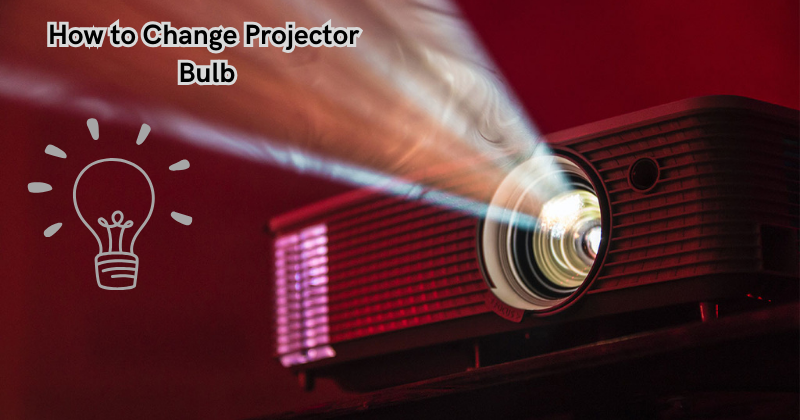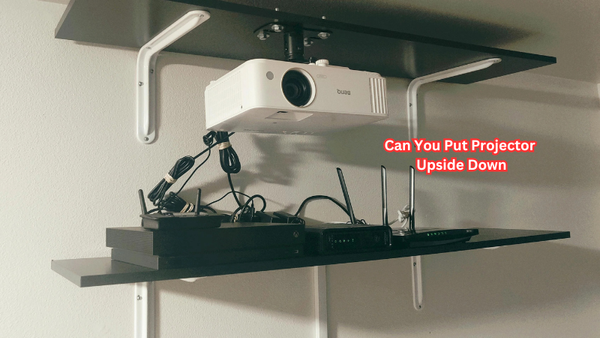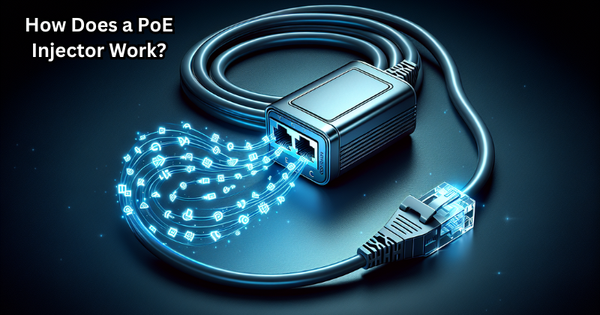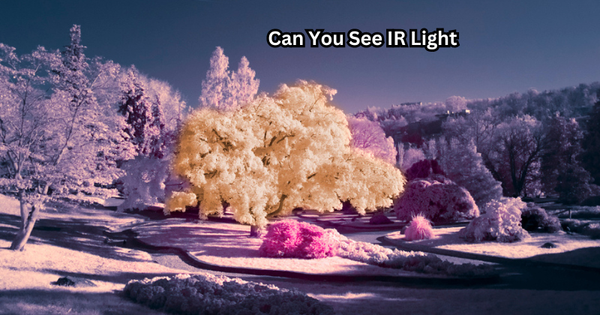Looking to breathe new life into your projector?
Replacing the bulb is a crucial aspect of maintenance that ensures optimal performance and image quality. In this guide, we'll walk you through the essential steps to change a projector bulb, demystifying the process and empowering you to enhance your viewing experience.
Whether you're a novice or a seasoned tech enthusiast, understanding how to safely and efficiently swap out the bulb will prolong the lifespan of your projector and keep your presentations, movies, and games looking crisp and vibrant. Let's delve into the simple yet impactful task of changing a projector bulb.
Why Change a Projector Bulb?
Before diving into the steps, it's essential to understand the reasons behind changing your projector bulb. Over time, bulbs dim and fail, which affects image brightness and clarity. This can be frustrating when enjoying a movie or delivering a presentation in a well-lit room.
Additionally, changing your projector bulb can save you money in the long run. Changing just the bulb is a more cost-effective solution instead of replacing the entire projector, which can be costly.
Another reason to change a projector bulb is for safety purposes. Overused or old bulbs can become overheated and pose a fire hazard if not replaced promptly. It's always better to err on the side of caution regarding electrical equipment.
Types of Projector Light Bulbs
Projector bulbs come in various shapes, sizes, and technologies. The most common types are halogen, HID (High-Intensity Discharge), and LED (Light-Emitting Diode). Each type offers different levels of brightness, color accuracy, and lifespan.
Halogen bulbs are the traditional projector choice and provide a warm, yellowish light. Projector lamp manufacturers typically rate their lifespan between 1,000 to 2,000 hours.
HID bulbs offer a brighter and more energy-efficient option compared to halogen bulbs. They produce white light closer to natural daylight and have a longer lifespan of around 3,000 hours.
LED bulbs are the newest technology in projector lighting and provide the brightest and most energy-efficient option. They offer a wide range of colors, high color accuracy, and an impressive lifespan of up to 50,000 hours.
What are the Signs Needing a Bulb Replacement?
If you're unsure whether your projector bulb needs changing, look out for the following signs:
- Dim or dark image: As bulbs age, they tend to lose brightness and become less effective in projecting a clear and vibrant image. Premature lamp failure can also cause a dim or dark image.
- Flickering or unstable image: If you notice your projected image flickering or becoming unstable, it could be due to an old or defective bulb.
- Color distortion: When a bulb nears the end of its lifespan, the colors on the projected image may appear dull or inaccurate.
- Warning message: Some projectors come equipped with warning indicators that alert you when it's time to change the bulb.
Replacement lamps are available for purchase from the projector manufacturer or third-party vendors. Make sure to check the bulb compatibility with your specific projector model before making a purchase.
Determining the Compatibility of Lamp
Most projector manufacturers provide a list of compatible bulbs for their models. However, it's essential to ensure that the lamp you're purchasing is compatible with your specific projector model before making a purchase. Some factors to consider when determining compatibility include:
- Bulb type: As mentioned earlier, projectors use different types of bulbs, so make sure to choose one that is compatible with your projector's technology.
- Bulb wattage: Projectors have a maximum wattage capacity, so make sure the bulb you choose falls within this range to avoid electrical issues.
- Lamp life: Some projectors may not be able to support bulbs with a longer lifespan than what they were originally designed for. Check the manufacturer's recommendations before purchasing.
- Projector model: Double-check the compatibility list to ensure your projector model is listed and supported by the replacement bulb.
How to Change Projector Bulb Step-by-Step Guide
Now that you have a basic understanding of the reasons behind changing your projector bulb and the different types available, let's dive into the steps involved in replacing it.
Gather your materials:
Before starting, make sure you have all the necessary materials, such as a replacement bulb, gloves, and a screwdriver. Plus, all tools and materials should be turned off, unplugged, and cooled down before you begin.
Turn off and unplug the projector:
Make sure the projector is turned off and unplugged before starting. This will help prevent any electrical mishaps during the replacement process.
Locate the lamp cover:
The first step is to locate the bulb under the lamp cover. Most projectors have a lamp compartment that houses the bulb, which is typically located on the bottom or back of the unit. It's essential to consult your projector manual for specific instructions, as some models may vary. Lamp housing may also have a screw or latch to secure it in place.
Remove the old bulb:
Once you've located the bulb, carefully remove it by pulling out the housing, unscrewing it, or releasing the latch. Make sure to handle the old bulb with care, as it may be hot and fragile. Dispose of the old bulb according to your local regulations.
Insert the new lamp:
Carefully insert the new bulb into the housing, making sure it's securely in place. Avoid touching the glass portion of the bulb, as this can affect its performance and longevity. The lamp assembly should slide easily back into place once the new bulb is inserted.
Reattach any screws or latches to secure the housing back in place. Reset the lamp timer on the projector if necessary. Lamp timer reset also has instructions in the user manual.
Turn on and test:
Once the new bulb is installed, plug the projector back in and turn it on. If done correctly, you should see a bright and clear image. Make sure to run a test before using the projector for any important presentation or event.
Replace lamp cover:
After you've tested the new bulb, replace the lamp cover and securely fasten it back in place. Before covering, the lamp should be firmly in place; otherwise, bulb life startups may be reduced.
Reset lamp timer:
If your projector has a lamp timer, reset it after replacing the bulb. This will help keep track of the bulb's lifespan and ensure timely replacements. Instructions on how to reset the lamp timer can usually be found in the user manual. Most projector lamps also come with a warranty, so check if your bulb is still covered for replacement or repair.
Dispose of old bulb:
Properly dispose of the old bulb according to your local regulations. Some retailers may also offer recycling services for used bulbs. Bare projector lamp bulbs should not be thrown in regular trash as they contain hazardous materials.
These are the basic steps involved in changing a projector bulb. Always consult the user manual for specific instructions and safety precautions before attempting to replace your projector bulb.
Enhancing the Performance of Your Projector: Maintenance Tips
Aside from changing the bulb regularly, there are other maintenance tips you can follow to keep your projector performing at its best. Here are a few suggestions:
- Clean or replace air filters: Projectors have air filters that prevent dust and debris from entering the unit. It's essential to regularly clean or replace these filters to ensure proper airflow and prevent overheating.
- Keep the projector clean: Regularly wipe down the outside of your projector with a soft, dry cloth to remove any dust or debris that may have accumulated. Avoid using harsh chemicals or cleaners, as they can damage the projector's surface.
- Keep it in a well-ventilated area: It's important to keep your projector in an environment with proper ventilation and moderate temperature. This can help prevent overheating and extend the lifespan of your bulb.
- Adjust brightness and contrast settings: Adjusting the brightness and contrast settings on your projector can also help prolong the life of your bulb. Lower settings can reduce strain on the bulb and ultimately increase its lifespan.
Follow these tips to get the most out of your projector and ensure a smooth presentation every time. Regular maintenance and timely bulb replacements are key to keeping your projector in top-performing condition.
FAQs
Are projector lamps replaceable?
Yes, most projectors have replaceable bulbs. However, it's important to check the manufacturer's recommendations before purchasing a replacement.
How do I know if my projector bulb is bad?
Some signs that your projector bulb may need to be replaced include a dim or flickering image, random color changes, or an error message on the projector screen. It's always best to consult the user manual for specific instructions and troubleshooting tips.
How long do projector bulbs last?
The lifespan of a projector bulb can vary depending on usage and maintenance. On average, they can last anywhere from 2,000 to 6,000 hours. Regular maintenance and timely replacements can help prolong the lifespan of your bulb.
Can you replace the LED bulb in the projector?
Yes, LED bulbs in projectors can be replaced. Plus, they have a longer lifespan compared to traditional lamps. However, it's essential to check the manufacturer's recommendations before purchasing a replacement bulb.
Conclusion
In conclusion, mastering the art of changing a projector bulb is a valuable skill that can prolong the lifespan of your projector and ensure an uninterrupted viewing experience. By following the outlined steps and safety precautions, you can confidently navigate this task, potentially saving time and money that would otherwise be spent on professional assistance.
Additionally, understanding the inner workings of your projector fosters a sense of ownership and empowerment over your technological devices. Regular maintenance, including bulb replacement, sustains optimal performance and safeguards against unexpected disruptions during presentations, movie nights, or gaming sessions.
With this knowledge at your disposal, you're poised to keep your projector shining brightly for years to come.





